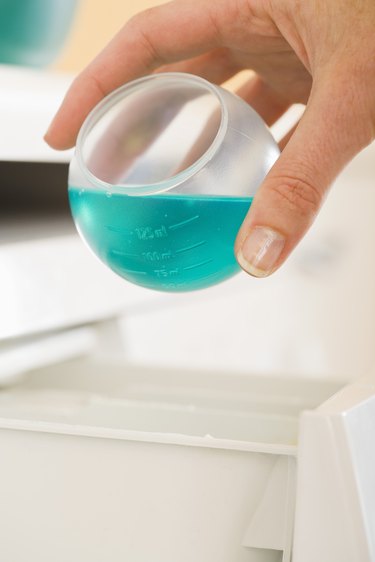Things You'll Need
Cotton T-shirts
Mild detergent
Washing machine
5-gallon bucket
Soda ash
Scale
Iron-rich dirt
Plastic tub
Water
Measuring cups
Wooden dowel
Distilled white vinegar
Dryer

You can dye T-shirts with a number of organic materials, including dirt that is rich in oxidized iron. When used with a combination of mordants (substances that help the dye bond to the shirt's fibers), iron-rich dirt can turn a plain white T-shirt a lovely earthtone hue. Although you must complete several steps to dye a dirt shirt, the process is easy enough for even a beginning dyer to master.
Step 1
Wash the shirts you intend to dye in hot water and mild detergent. This will remove any dirt or starch from the fabric. Do not add fabric softener.
Video of the Day
Step 2
Fill a 5 gallon bucket with warm water and add 5 oz. of soda ash (1 oz. per gallon). Stir to dissolve the soda ash.
Step 3
Add the shirts you intend to dye to the bucket and soak for at least 30 minutes before dyeing.
Step 4
Make mud from iron-rich dirt and water in a large plastic tub. Add four parts water for every one part of soil.
Step 5
Mix the dirt and water to create a slurry.
Step 6
Place the soda-ash treated shirts in the mud bath and soak for at least four hours. Occasionally stir the mud with a wooden dowel; this will encourage the shirts to absorb more of the mud dye.
Step 7
Remove the shirts from the mud bath and squeeze to remove excess liquid.
Step 8
Fill a plastic container with clean water and add 1 cup of distilled white vinegar.
Step 9
Add the dirt-dyed shirts and allow them to soak for five minutes.
Step 10
Remove the shirts and squeeze to remove excess water.
Step 11
Lay the shirts to dry in an area away from direct heat and sunlight.
Step 12
Rinse the dry shirts under a stream of clean, cool water. Rinse until the water runs clear.
Step 13
Dry the rinsed shirts in a clothes dryer.
Tip
If you want the dirt dye to better saturate the shirts, mix the mud in a large stainless steel cook pot, add the shirts, and cook over low heat.
Iron-rich dirt is either a vibrant red or yellow. Depending on your geographic location, you'll find different varieties of dirt with large amounts of oxidized iron. Regardless of where you live, collect richly colored soil for the best dye results.
Video of the Day